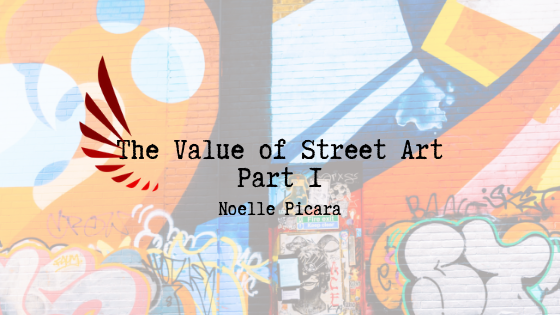In our culture, street art is underappreciated and undervalued. Academic art can be looked upon like a status symbol for people who have the resources to study and learn it.
Academic art in the U.S. is often focused on art forms that originated in Europe, reflecting a Eurocentric worldview and an implicit sense of superiority that reinforces white supremacy. For example, ballet dance and Western European classical music are taught in colleges, music programs, and elsewhere given preference and therefore considered to be “high art.” Of course, European art is not a bad thing; these art forms are worthy of study. However, what cultural values are we communicating to students when we value European art, which is traditionally taught through costly lessons and academia, above all else? Not only for the advancement of an ethical society, but also for the success of our students, we must recognize that the value of street art is enormous for the study of its complexity and its social, historical, and cultural impact.
Where Does Street Art Originate From?
You cannot suppress street art, as expressed in the idea of Tupac Shakur’s “A Rose That Grew from Concrete.” Street art is not something that one can stop; it is a movement, a requirement, especially of oppressed people, to express themselves and their life experiences. Street art is a way of communicating through complex, innovative language with minimal material resources. Hip-Hop, for example, is a social dance that dispels conflict creatively. There’s a competitive aspect, a collaborative element, a requirement of prior knowledge, and an opportunity to show your unique identity. All people needed to be involved with the initial form of hip-hop is to live in its culture and to understand its lineage. And of course, as with any art form, consistent effort and practice is required to become exemplary at your craft. You can’t buy that lived experience. Hip hop is a powerful response to attempts to suppress the spirit, but the spirit of art cannot be suppressed.
Not Many Differences
Thinking about academic art in comparison to street art, there is no inherent superiority in academic art that makes it more substantial than street art. Some people may think, for example, that classical music is more sophisticated than hip-hop music. This could be because in the institution of education, people who are mostly from and educated by a European cultural history don’t fully understand the complexity of hip-hop.Hip-hop takes work and includes its own range of complexities. One needs to have rhythm, rhyme and arrangement skills in order to be proficient in this art form. The technical proficiency and level of complexity in street art is often times overlooked and undervalued in educational institutions.
Bringing Street Art Into The Classroom
The emergence of street art, and how it just arises and creates robust art forms, is not necessarily represented in institutions. A lot of art evaluation and study is focused in on mainly, European art forms. Personally, I have a passion for studying street art because it inspires me to challenge myself and sharpen my ability to understand and express my own cultural context. As teachers, we need to think about whether we are sustaining systems of oppression or disrupting them. When we sustain art forms that only feature a small group of perspectives, we especially disempower students from marginalized groups, and we also limit our own powers of expression. By bringing street art into the classroom, we make a powerful statement about the value of street art, and we start to dismantle the hierarchy that keeps in place a segregation of the imagination.

